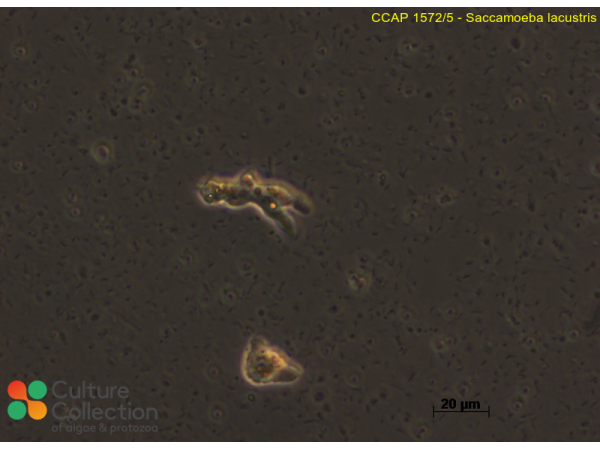References [ 4 ]
Michel R, Müller K-D & Hauröder B (2009) A novel microsporidian endoparasite replicating within the nucleus of Saccamoeba limax isolated from a pond. Endocytobiosis Cell Research 19: 120-126.
DOI: none
Michel R, Haroder B & Muller K-D (2010) Saccamoeba limax (Hartmannellidae) isolated from Elodea sp. was colonized by two strains of endocytic bacteria and a bacteriophage. Journal of Endocytobiosis and Cell Research 20: 38-44.
DOI: none
Corsaro D, Walochnik J, Venditti D, Steinmann J, Müller KD & Michel R (2014) Microsporidia-like parasites of amoebae belong to the early fungal lineage Rozellomycota. Parasitology Research 113: 1909-1918.
Michel R, Walochnik J & Scheid P (2014) Article for the "Free-living amoebae Special Issue": Isolation and characterisation of various amoebophagous fungi and evaluation of their prey spectrum. Experimental Parasitology 145: S131-S136.
Division/Phylum: Amoebozoa Class: Tubulinea
Note: for strains where we have DNA barcodes we can be reasonably confident of identity, however for those not yet sequenced we rely on morphology
and the original identification, usually made by the depositor. Although CCAP makes every effort to ensure the correct taxonomic identity of strains, we cannot guarantee
that a strain is correctly identified at the species, genus or class levels. On this basis users are responsible for confirming the identity of the strain(s) they receive
from us on arrival before starting experiments.
For strain taxonomy we generally use AlgaeBase for algae and
Adl et al. (2019) for protists.
| Attributes |
| Authority | Corsaro et al. 2010 |
| Isolator | Michel (2006) |
| Collection Site | from mud and decaying leaves in pond Sudermühlen, Lüneburg Heath, Germany |
| Notes |
Isolation: plating with E. cloacae; Strain SL-3 appeared after its isolation as host of an intranuclear Nucleophaga-like parasite, non infected trophozoites had been separated from those infected and represent the origin of this strain "SL-30". The endoparasite was called "K-SL3". Originally deposited as Saccamoeba limax 2007 |
| Axenicity Status |
Bacteria present |
| Area |
Europe |
| Country |
Germany |
| Environment |
Freshwater |
| GMO |
No |
| Group |
Protozoa |
| In Scope of Nagoya Protocol |
No |
| ABS Note |
Collected pre Nagoya Protocol. No known Nagoya Protocol restrictions for this strain. |
| Collection Date |
c 2006 |
| Original Designation |
SL-30 (SL-3) |
| Pathogen |
Not pathogenic: Hazard Class 1 |
| Strain Maintenance Sheet |
|
| Toxin Producer |
Not Toxic / No Data |
| Type Culture |
No |
| Taxonomy WoRMS ID |
|

